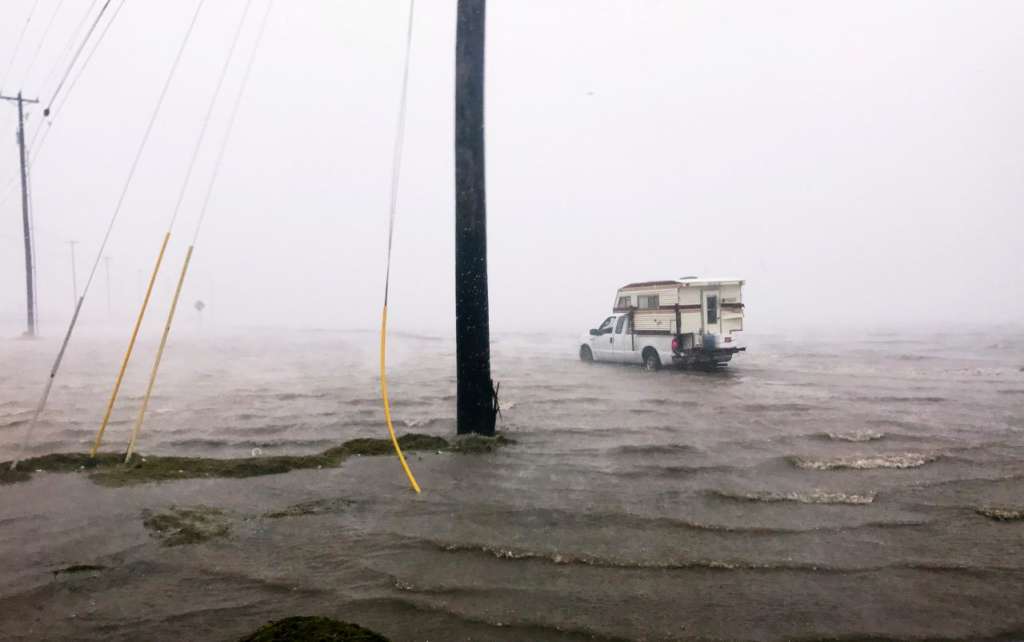Hurricane Harvey moved slowly but powerfully across Texas on Saturday, downgraded to a Category 2 storm, but only after hammering the coast with torrents of rain and packing powerful life threatening winds.
The hurricane, initially a Category 4 and the first major storm to hit the US mainland in 12 years, made a first landfall northeast of Corpus Christi, Texas, around late on Friday with maximum winds of 130 miles per hour.
A few hours later the storm made a second landfall just north of the town of Rockport as a Category Three hurricane, with winds of 125 mph, the National Hurricane Center said.
Harvey lost strength as it moved inland over south Texas and dropped to a still-dangerous Category Two storm, with winds of 100 mph, and then to a Category One with winds of 90 mph, the NHC said at 1000 GMT.
President Donald Trump, facing the first large-scale natural disaster of his presidency, granted Texas Governor Greg Abbott’s request to declare a “major disaster” zone in the state to speed federal aid to the millions in harm’s way. Abbot in turn activated more than 1,000 National Guardsmen to help with evacuation and recovery.
The NHC warned of likely “catastrophic and life-threatening flooding” due to the massive rainfall forecast and the huge storm surge, which could reach 13 feet (nearly four meters) in some places.
“Harvey is expected to slow down through the day and meander over southeastern Texas through the middle of next week,” the NHC said.
Meteorologists warned that tornadoes were possible through Saturday from Texas into Louisiana, which is also expected to take a major hit.
The powerful storm has forced hundreds of thousands to flee their homes and crippled oil production in the Gulf.
The storm posed the first major emergency management test of Trump’s administration. The president was expected to receive briefings during the weekend at Camp David.
